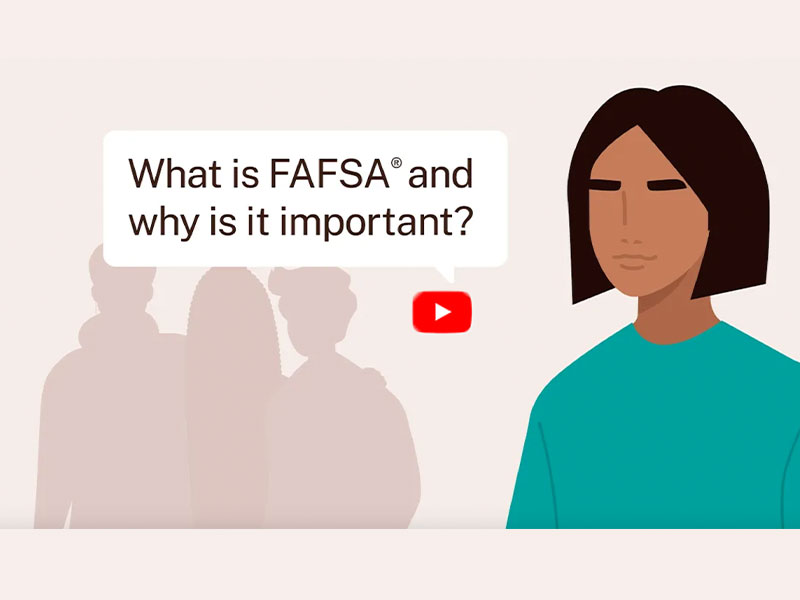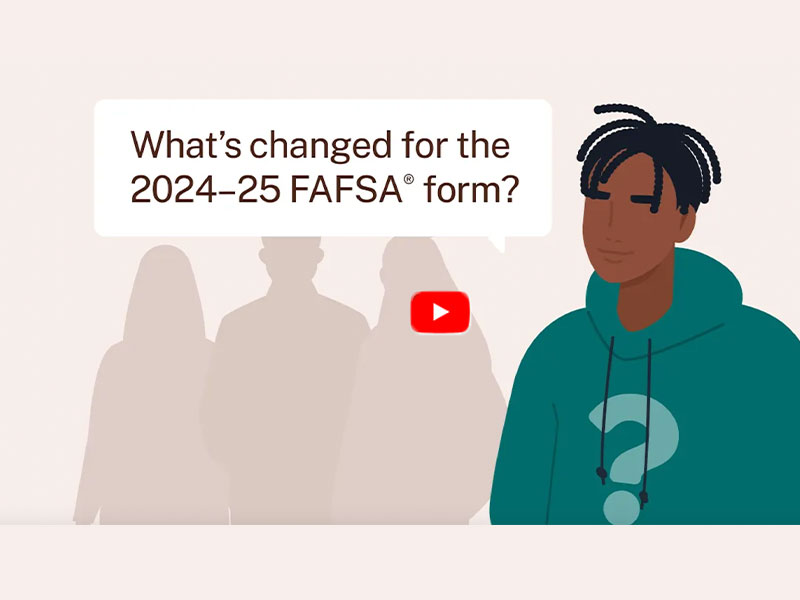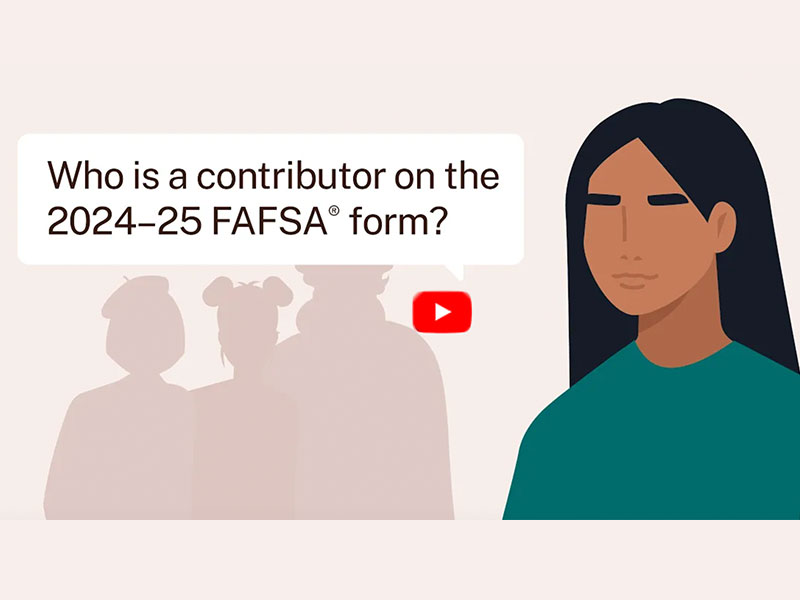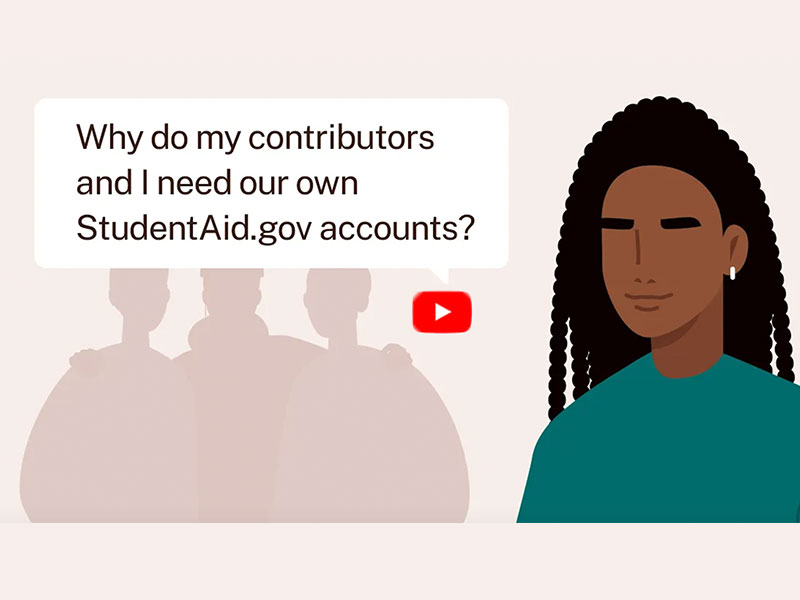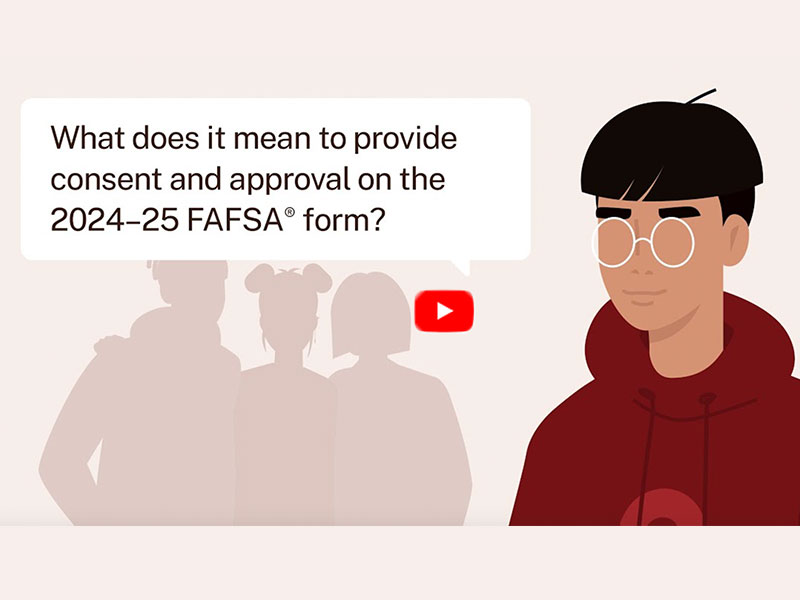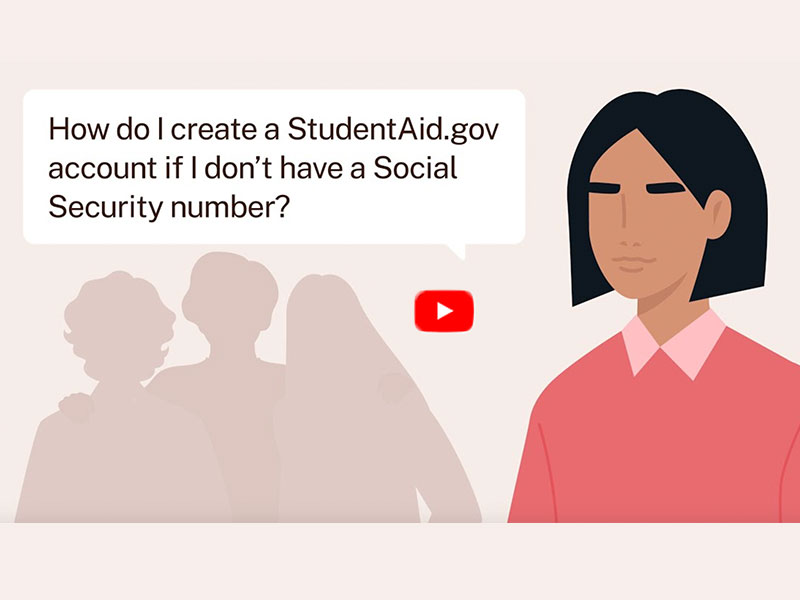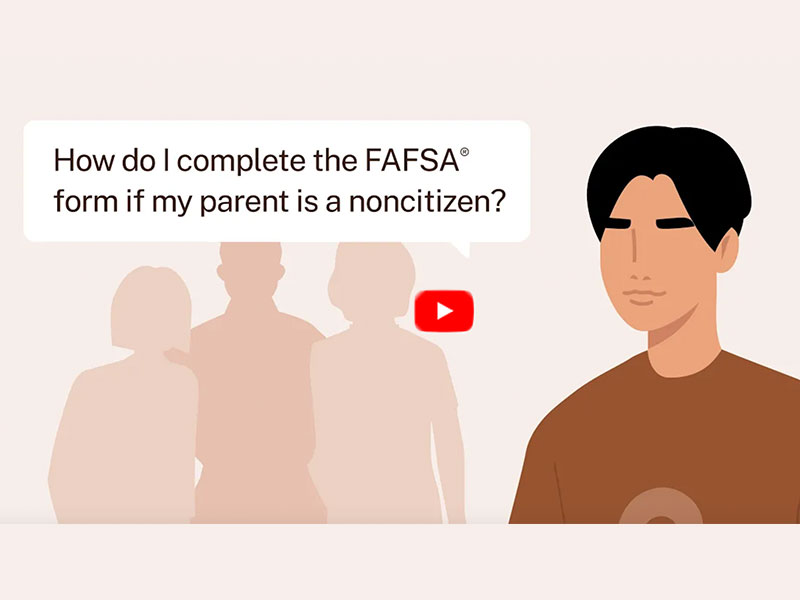FAFSA Simplification
FAFSA Simplification Act
On December 27, 2020, Congress passed the Consolidated Appropriations Act. This included the FAFSA Simplification Act which is a sweeping redesign of the systems and processes used to award federal student aid. The goal of the Simplification Act is to make it easier for students and their families to complete the FAFSA and expand eligibility to more students.
What You Need to Know
The videos below are designed to assist you with understanding the significant changes made to the 2024/25 FAFSA
How to Prepare
Both students and parents must have an FSA ID to complete the FAFSA at www.studentaid.gov .
- If you have previously filed an FAFSA application, your same FSA ID and password will be used for the new FAFSA.
- If you do not have an FSA ID and password, apply for one now.
Tax information for the 2024-2025 FAFSA will be for the 2022 year. Make sure that the 2022 federal tax return has been filed (by student and or parent if required to file).
Check out the Federal Student Aid Estimator Tool to find out how much federal student aid a student may be eligible for starting with the 2024-2025 award year.
Changes in Terminology
Consent
All contributors (student, parent/guardian, etc.) will be required to provide consent
for tax information to be securely downloaded from the IRS to the Department of Education
for the FAFSA form. Failure to provide consent will make the student ineligible for
FAFSA completion.
Contributor
Refers to anyone who is required to provide information for a student's FAFSA form
(student, parent, student spouse, adopted parent or parent's spouse).
FTI (Federal Tax Information)
Both students and parents will need FTI from 2022 to complete the 2024-2025 FAFSA.
Student Aid Index
The SAI will replace the Expected Family Contribution (EFC). This new formula will
be used to determine a student's eligibility for federal Pell Grant and other need-based
aid.
Impacts to Students and Families
The Department has been working to provide timely updates to students and families regarding the changes to 2024-25 FAFSA processing timeline via the FAFSA Support Page, email campaigns, Federal Student Aid's social media channels, and other deliverables. Key messaging includes:
- FAFSA eligibility information will be sent to schools and states in the first half of March.
- Until schools and states receive the FAFSA information, they won't be able to answer questions about aid eligibility or status.
- Once schools receive students' FAFSA information, they will need additional time to provide personal financial aid award information.
- Students can review their application status on the Federal Student Aid website.
- Students will receive a FAFSA Submission Summary after their form has been processed. Students may immediately use the Submission Summary to review their form answers and understand any actions needed to complete their form.
- The Department will continue to follow-up by email notifying student that their form has been processed and their information has been sent to their schools and state.
- Students with contributors without a Social Security Number will be able to submit their FAFSA application the first half of March.
- Students who need to make corrections to their form will be able to do so later in March.
We will continue to update this page as additional information becomes available. This will allow you to learn more about the specific changes, timelines, and how to prepare below.





